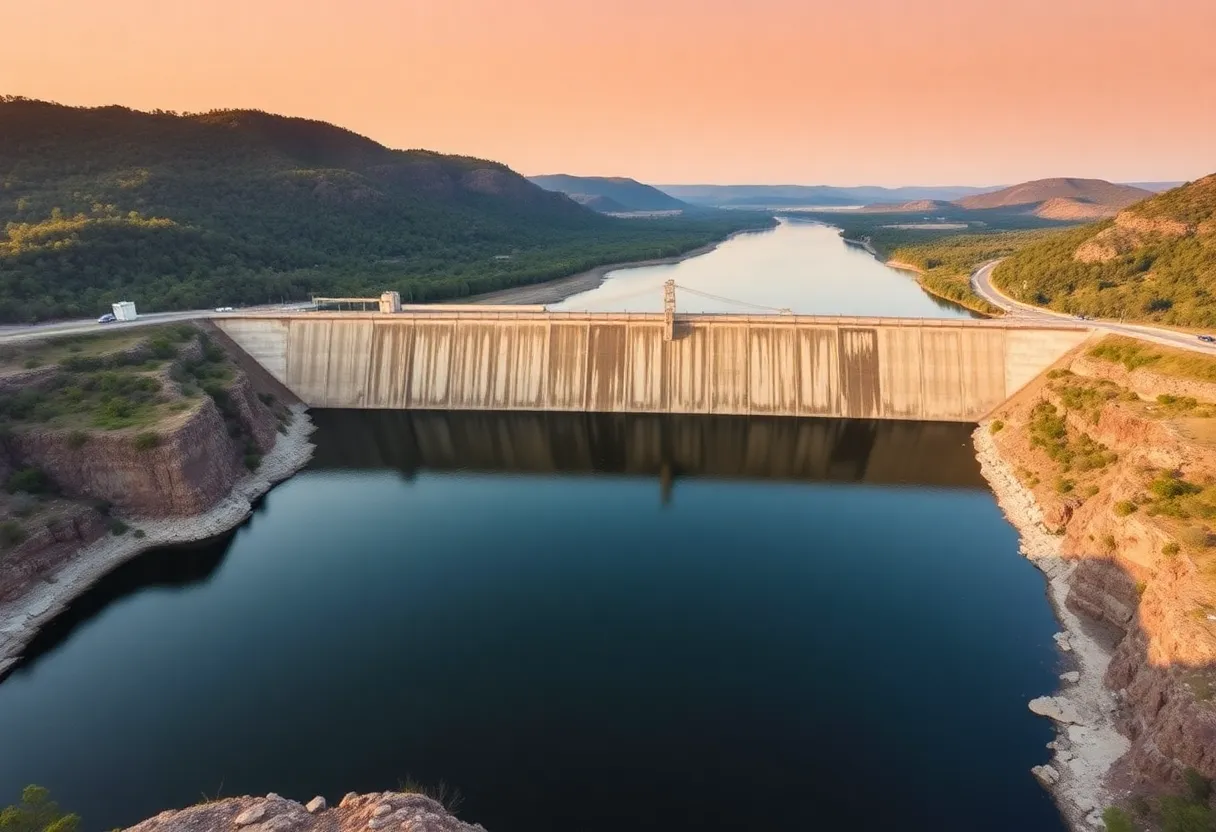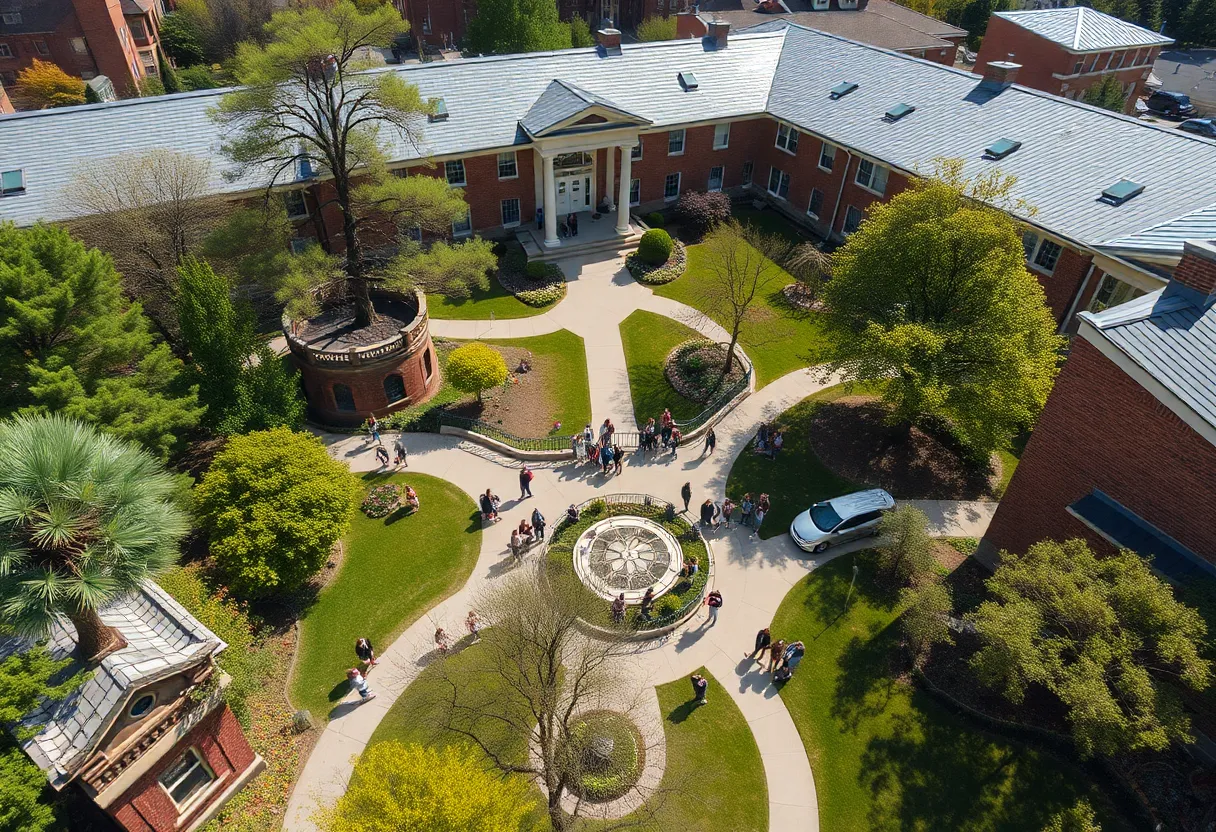News Summary
The Barren River Dam, an engineering marvel in southcentral Kentucky, symbolizes resilience and progress. Built under the Flood Control Act of 1938, it transformed the local economy and landscape. Supporters envisioned a hydroelectric plant, but opposition arose regarding farmland. Despite challenges, it was completed in 1964 and remains a hub for recreation and flood control, representing hope for the community.
Discovering the History and Impact of the Barren River Dam in Southcentral Kentucky
Welcome to the heart of southcentral Kentucky, where the Barren River Dam stands as a testament to the area’s rich history and its unwavering commitment to progress. Built during a time of significant economic challenges, this dam has not only changed the landscape but also the lives of countless residents. Let’s take a journey through time to explore how this engineering marvel came to shape the region.
Flood Control Act of 1938: A Turning Point
The story begins back in 1938 when the Flood Control Act was signed into law by President Franklin Delano Roosevelt. This important legislation authorized measures to control floods across several states, including Kentucky. Among the projects that emerged from this act was the Barren River Dam, which would eventually create a stunning lake that is now a focal point of a state park.
Hopes and Dreams Amidst Opposition
Local newspapers were buzzing with excitement about the dam’s potential. The Glasgow Daily Times predicted that it would give birth to the largest lake in Kentucky, fostering hopes for a hydroelectric plant that ultimately never came to be. Yet, while visions of a thriving, energy-producing hub filled the air, the project faced considerable pushback. Some community leaders expressed concerns over underwater farmland, suggesting that the dam might not provide the benefits promised.
The Journey to Realization
Fast forward to 1955, and Congressman William Natcher stepped into the limelight as a passionate supporter of the Barren River Dam. In an era when approximately 100,000 individuals had left the area in search of jobs, he viewed the dam as a potential lifeline for the struggling economy of southcentral Kentucky. It would be a beacon of hope, creating jobs and boosting local businesses.
Despite his advocacy, the journey was anything but smooth. In 1957, initial planning and budgets received the green light, but a significant setback occurred in 1959 when President Eisenhower vetoed the funding bill. Fortunately, Congress ultimately overrode the veto, allocating necessary funds to get the ball rolling.
Making Way for Progress
As construction began in 1960, over 20,000 acres were acquired across Allen, Barren, and Monroe counties for the dam’s development. The groundbreaking ceremony was a noteworthy event: roads had to be diverted and family cemeteries relocated to make way for this monumental project. Sixteen roads covering 40 miles were impacted, and 15 bridges were constructed as part of the extensive work required to facilitate access.
The Completion and Its Legacy
After years of dedication and hard work, the Barren River Dam was completed in 1964. Towering impressively at 146 feet high, with a 175-foot tower operating three gates, it was styled as an earthen dam designed to discharge up to an incredible 13,000 cubic feet of water per second. The dam plays a crucial role in flood prevention for both the Barren and Green rivers, ensuring safety for the communities surrounding it.
More Than Just a Dam
Today, the Barren River Dam is not only a protective structure but also a hub for recreational fun. Boating, waterskiing, fishing, hiking, and golfing among beautiful landscapes attract visitors from far and wide. Initially called Barren River Dam Number 2, it carried the nickname Port Oliver Dam during construction, a nod to a town from the 1800s that once thrived in the same area.
A Historical Reflection
The story of the Barren River Dam has been well documented, with editions capturing its journey and significance in the Bowling Green and Glasgow regions. This dam isn’t just a marvel of engineering; it’s a symbol of resilience and transformation for a community that has seen its share of struggles and triumphs along the way.
As we look back at the history of the Barren River Dam, it reminds us that even the most ambitious projects can arise from the ashes of hardship. From environmental challenges to economic rebirth, the dam stands today not just as a structure of concrete and earth, but as a lasting legacy of hope and determination for future generations.
Deeper Dive: News & Info About This Topic
HERE Resources
Bowling Green Residents Struggle After Historic Flooding
Bowling Green Declares State of Emergency Due to Flooding
Temporary Shelter Opens for Flood Victims in Bowling Green
Bowling Green, Kentucky Faces Severe Flooding
Bowling Green Prepares for Annual Service of Remembrance
Bowling Green Faces Major Flooding Threat as Heavy Rainfall Approaches
Bowling Green Police Arrest Suspect in Vehicle Break-Ins
Southern Queen Hotel Renovation Initiates New Housing Development
Traffic Alerts and Flooding Warnings in Bowling Green, KY
Bowling Green’s Riverfront Park Project Moves Forward
Additional Resources
- WNKY: Throwback Thursday – History of the Barren River Dam
- Wikipedia: Barren River Dam
- WBKO: Area Lakes Managing Floodwaters
- Google Search: Barren River Dam
- WSMV: Pedestrian Flown to Nashville After Crash
- Google Scholar: Barren River Dams
- WBKO: Emergency Services Working Water Rescue
- Encyclopedia Britannica: Barren River Dam
- BG Daily News: Drowning Victim Recovered
- Google News: Barren River
- WNKY: Body Found in Barren River
- Google Search: Kentucky Flood Control
- WBKO: Bowling Green Seeking Grant Funds
- Google Scholar: Kentucky Water Management
- WNKY: Barren River So Low
- Encyclopedia Britannica: Water Management







